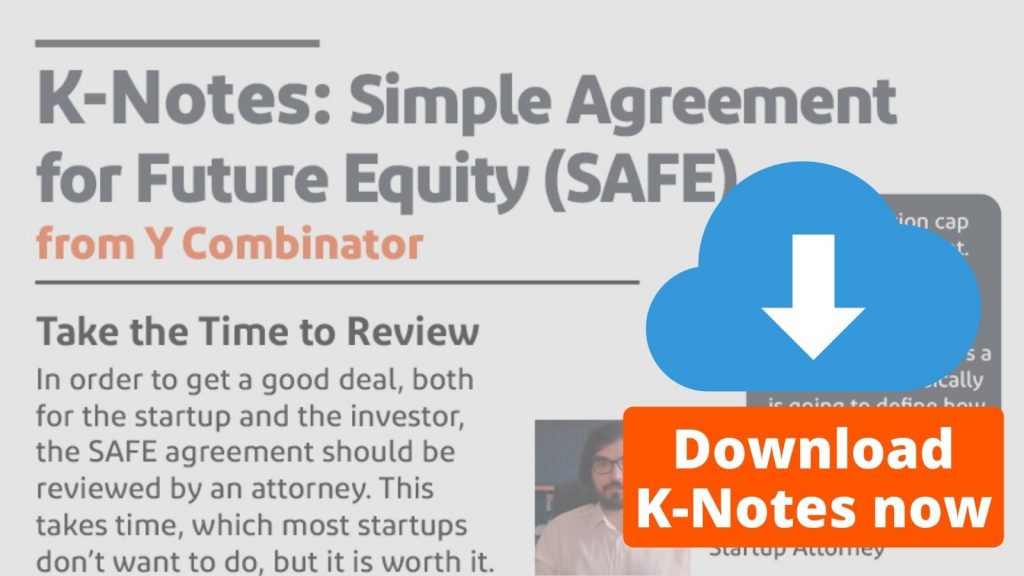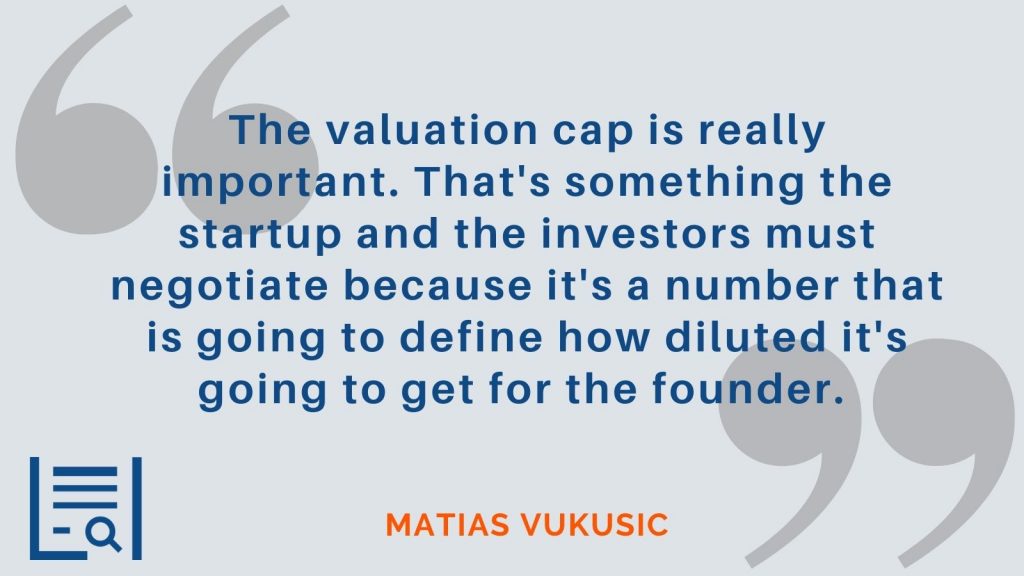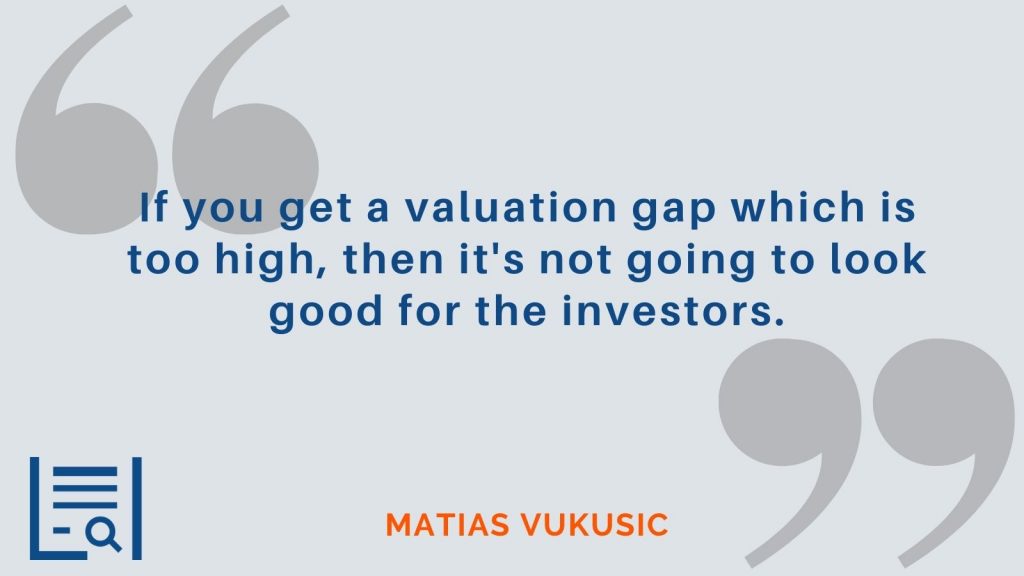Y Combinator developed the Simple Agreement for Future Equity (SAFE) agreement, in 2013 to help young startup companies raise capital quickly and easily. Since then, this template has been a staple in the tech startup community. In this episode, Chilean startup attorney Matias Vukusic tears down the Y Combinator SAFE Agreement and talks about identifying impostor SAFE agreements and determining “reasonableness” when advising young companies looking for startup financing.
Questions in this Episode:
- Why do startups want SAFE agreements in raising capital?
- How can you spot an impostor SAFE agreement?
- How does the SAFE agreement work?
- Which valuation is better – pre-money or post money?
- Whose consent is needed to modify the agreement?
SAFE Agreement Quick Overview
First developed by Y Combinator in 2013, the SAFE agreement is between a startup and an investor. In exchange for early capital, the startup promises to convert the funds into future equity or shares of the company when the startup begins raising money on price rounds. Startups often use SAFE agreements because of the difficulty of evaluating their company in the early days.
The SAFE Agreement is only about six pages and can be executed quickly. This is a considerable advantage over traditional equity round legal documents, which can be dozens of pages and take months to complete. Although there are now several versions of the SAFE agreement, this is the most often used document by startup companies when raising capital.
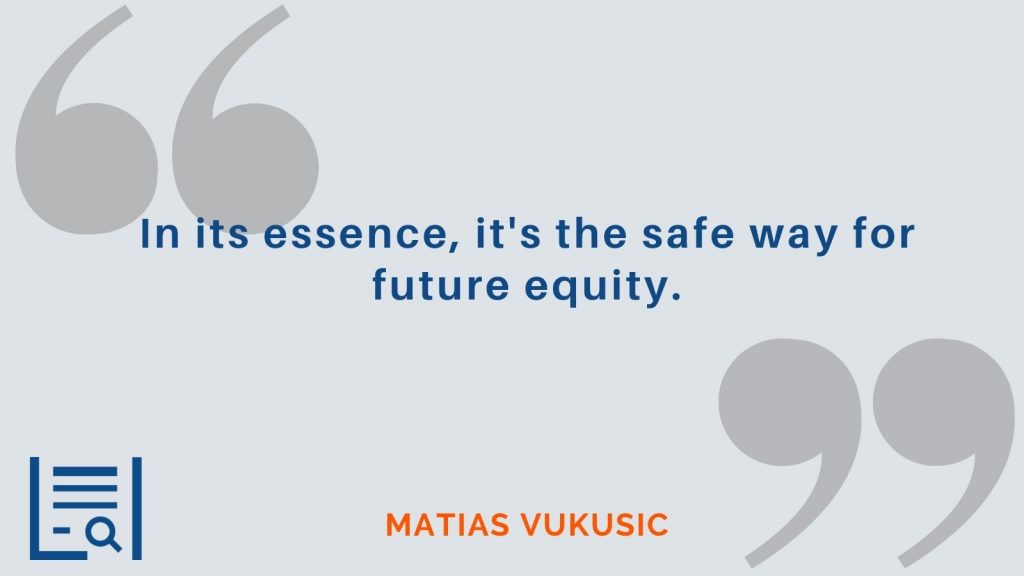
Beware of Impostor SAFE Agreements
The SAFE agreement has been translated into several languages and applied in many jurisdictions. Startups in India have a version of the SAFE agreement. There is also a version translated into Spanish that Chilean and other Spanish-speaking startups use.
US companies are great with branding and acronyms. But although these other versions may be called “SAFE” agreements, they do not respect the terms and conditions of the original Y Combinator SAFE agreement. The name sounds the same, so marketing is much easier. But the terms can be vastly different.
For example, an Estonian company has a SAFE agreement that has very little in common with the original version. The Estonian version calls for a maturity date. But the original SAFE agreement is not a debt instrument, so there is no maturity date at all.
One of the dangers for international lawyers is when they look for SAFE agreements to use in drafting they may find impostors. There are contracts titled SAFE that are not the same as the Y Combinator SAFE agreement. These other agreements are just titled that way by the contract creator for marketing purposes. Fortunately, there are several well-written SAFE documents drafted in the spirit of the original SAFE agreement.
It's meant to celebrate innovation that basically makes it possible to modify the document without actually getting the consent of some investors. #ContractTeardown Click To Tweet
How the SAFE Agreement Works
The basics are simple. The investor provides a certain amount of funding to the startup very early, usually before there is a known valuation of the company. In exchange, the company agrees to give the investor equity in the company at a future date.
The two fundamental questions are how much equity the investor will get and when they will receive it.
The investor and the company negotiate these terms and incorporate them in the SAFE agreement. The “when” is usually triggered by an event like a formal valuation of the company or when the company raises money through a Series A round of financing.
The “how much” is usually determined as a factor of how much was invested in relation to the company’s valuation at a specified time. These factors will determine how many shares the investor will receive and at what price.
Pre-Money versus Post-Money Valuation
The two terms you will hear most often in SAFE agreements, and most startup financing agreements, are pre-money valuation and post-money valuation. Pre-money is the valuation of the company before the investments take place. Post-money valuation often refers to the company’s value after an investment round takes place, like selling a Series A round of stock.
The company’s valuation is critical to the SAFE investor because the company’s value will determine the investor’s percentage of equity at the time of the triggering event. The first Y Combinator SAFE agreements were pre-money valuations, but today most investors prefer post-money SAFE agreements.
Why Investors Favor Post-Money SAFE Agreements
With the post-money SAFE agreement, the investor and company agree on a post-money valuation cap. Post-money valuation simply means the total of the pre-money valuation plus any new money or assets raised. Investors like this agreement because at signing they get to lock in the percentage of the company they’ll own when the triggering event occurs. The post-money SAFE is clear and simple and more friendly for investors. With this agreement, the investor’s share will not get diluted.
There is a downside, but it is not for the investor. Because of the post-money valuation cap, the founders stand the chance of getting some dilution on their eventual ownership share.
Although the company will get their money faster, by using a post-money SAFE agreement the founders might experience more dilution than with other types of fundraising agreements like convertible notes or Keep It Simple Security agreements.
What is the Right Valuation?
Getting the proper valuation is essential to optimum fundraising. If your valuation is too low, your fundraising will suffer. If your valuation is too high, investors may not commit to your Series A round. And, a bad Series A round signals a lack of confidence by investors and means less money and a poor beginning.
Getting the proper valuation is not science and depends on many factors. What is your business model? How much capital do you have right now? How are you compared to similar companies in your industry? How is your business history?
What is Reasonable
The fast-moving startup industry is a culture of speed and handshake deals. No one has time to wait, and no one has time for lawyers anymore. But sometimes, the cost of this speed is the ambiguity in the contract terms.
| e) | Representations and Warranties |
| To it’s knowledge, the Company owns or possesses (or can obtain on commercially reasonable terms) sufficient legal rights to all patents, trademarks, service marks, trade names, copyrights, trade secrets, licenses, information, processes and other intellectual property rights necessary for its business as now conducted and as currently proposed to be conducted, without any conflict with, or infringement of the rights of, others. |
For example, the Reps and Warranty Section states that the Company owns “or obtains on commercially reasonable terms” sufficient legal rights to all patents, trademarks, service marks and other intellectual property. Most of the time, startups don’t have any registered intellectual property. Or even worse, the founders believe they do when they actually have no idea.
But what is a reasonable term? And, what is a reasonable term for startups or different worldwide jurisdictions? For example, reasonable intellectual property lawyer fees in the US may not be reasonable in other countries. If you have a software company that sells worldwide, can you really represent that you won’t have intellectual property rights anywhere in the world?
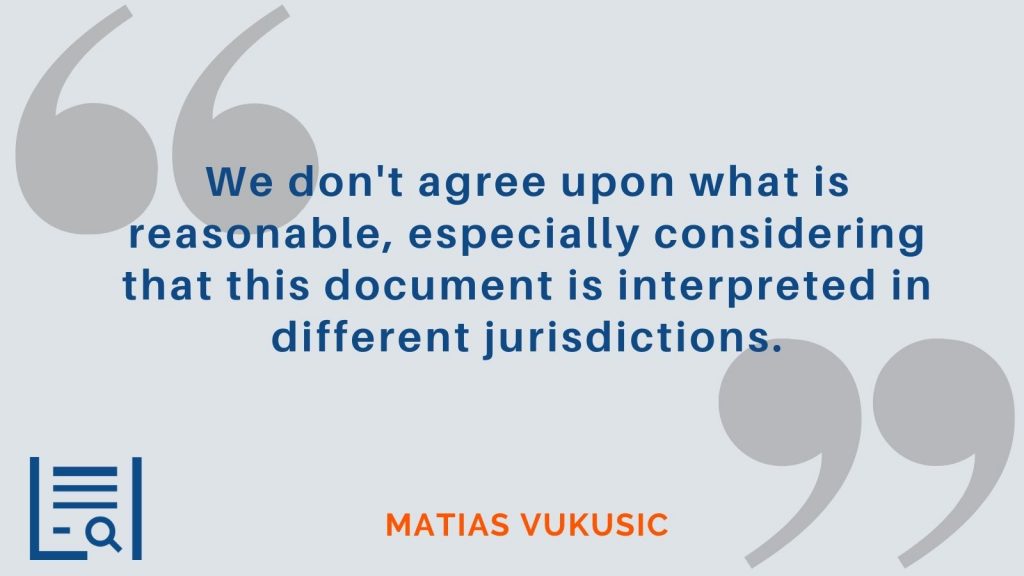
You Can Modify the Agreement Without the Investor’s Consent
In 2018, Y Combinator changed the SAFE agreement template to allow the company to modify it without getting the consent of some investors. The company must solicit approval from investors, but it does not need to get their signatures at all.
While this was meant to celebrate innovation, you should not let an investor client agree to this clause. As an investor, why would you sign a document that can be modified without your consent While the idea of this clause may embrace the culture of Silicon Valley or Y Combinator, it is not something you would recommend to your client.
Take Time to Review
In the startup world, there is a cultural narrative that founders should not take any time to review or negotiate the terms of the financing deals they are signing. Just say yes to the terms sheets the investors are offering and sign quickly.
And in most countries, the investor is usually way more powerful than the startup and acts as a philanthropist giving money away to children. Basically, the investor holds the power. This attitude is partially reflected in the Y Combinator SAFE template from 2018, which protects the SAFE investors from getting diluted at all. That was not an industry standard, even in Latin America.
But today, the SAFE agreement can be good for the company because they can get funds very quickly. And the agreement can also be good for investors because they cannot get diluted.
The biggest takeaway is your company cannot get a good deal unless the specific SAFE agreement is reviewed by an attorney, and modifies clauses to fit your situation. Unfortunately, that takes some time. And in this world, time is the one thing that startups do not like to spend.
Show Notes
THE CONTRACT: Y Combinator SAFE Agreement Documents
THE GUEST: Matias Vukusic is a Chilean startup attorney who deals with a lot of SAFE agreements in the venture capital industry. He can be reached on Twitter, LinkedIn, or his website vukusic.cl.
THE HOST: Mike Whelan is the author of Lawyer Forward: Finding Your Place in the Future of Law and host of the Lawyer Forward community. Learn more about his work for attorneys at www.lawyerforward.com.
If you are interested in being a guest on Contract Teardown, please email us at community@lawinsider.com.
Transcript
Matias Vukusic [00:00:00] I came across into a document which is actually called a simple of imperfect equity from stunning company, but it this had nothing to do with Y Combinator. That’s a thing that for us, like international lawyers, that maneuverable browsing, we will all insider. We may find documents that are titled, say, for example, that’s something, but they are not what they say they are.
Intro Voice [00:00:22] Welcome to the Contract Teardown show from Law Insider, where legal experts tear down contracts from some of the most well-known companies and high profile executives around the world.
Mike Whelan [00:00:35] In this episode, Chilean startup attorney Matias Vukusic tears down the Y Combinator Safe Agreement, or the Simple Agreement for Future Equity. Matias talks about identifying imposter safe agreements, determining reasonableness when advising a very young company, and shares an exciting announcement about the future of the contract teardown show. Y Combinator Safe Agreement is a key document for any young startup, so let’s tear it down.
Mike Whelan [00:01:06] Hey, everybody! Welcome back to the contract teardown show. I’m Mike Whelen. On this show, we do exactly what the name sounds like. We take contracts and other documents and we tear them apart. Hanging out with smart friends like my buddy Matias Vukusic. How are you today?
Matias Vukusic [00:01:22] Fine. Thank you. Thanks, Mike. Thanks for having me on contractor down. Absolutely.
Mike Whelan [00:01:27] And Matias, where are you located? You’re you’re
Matias Vukusic [00:01:31] not in. I’m in. You’re down south. I’m down south. Yes, I’m in Chile, Santiago, Chile,
Mike Whelan [00:01:37] as you do, which sounds like a cool place. I was looking at pictures the other day when talking to Matias, and I’m going to move. Side note you guys, we have an exciting announcement at the end of this conversation with Matias. It has to do with things that are K. Bueno, so we’ll talk about it later. But right now, what we want to do is talk about this document, Matias, I’m just going to share my screen real quick. This is the safe document. The Simple Agreement for future equity document. This one comes from Y Combinator is where we pulled it. And if you look at this thing, guys, it’s about six pages. So we’re going to talk about this, Matias, before we dig into it. What is this document? What’s it for? Why does it matter? When will a lawyer see this thing?
Matias Vukusic [00:02:19] It’s it’s in its essence, the safe way for future equity. That pretty much sums that sums up what the document is. It’s an agreement between a startup and an investor, by which investor is promised that he will convert the money given to the startup into equity or shares of such company on a future date. When the startup raises money on a price round. So this is basically for early stage startups.
Mike Whelan [00:02:46] Perfect. And tell me about yourself in your practice, are you seeing a lot of these in in the practice that you’ve got down in Chile?
Matias Vukusic [00:02:52] Yeah, I’m I’m a lawyer here in Chile. I deal with startups and into the venture capital industry and the safe agreement, or what’s usually referred to as the safe agreement. The different versions of that is probably one of the most used investment documents for early stage startups.
Mike Whelan [00:03:13] Perfect, and we’ll talk about that. I’m interested in the fact that you’re in Chile and you’re pulling these documents, and you and I had talked previously a little bit about how this kind of document is used and repurposed in a lot of different contexts. So give me as we dig into this, we’re going to start talking about different principles that are directly, you know, sections that are inside this document. But but talk to me about that repurposing, especially in that international context. How are people taking this document and sort of finagling it to use in a lot of different contexts?
Matias Vukusic [00:03:48] Yeah, it’s the same has been translated into several languages and applying to the different jurisdictions. There is even on a loan side that you can find even ice sheets, which is like the India say, let’s use it for companies based in India, for the startup base in India. Even in Chile have the The Academy, which is an organization formed by local venture capital firms, and they have their own version of the safe agreement in Spanish. But what’s the thing is that they don’t usually respect what the safe is, and they mostly use just they use just the name, they say. I mean, you guys, you Americans are great with acronyms. You have the safe like you have the keys. Like, keep it simple security. You have the boss act like you are doing great with that and you’re great. Like you like having this marketing sound like documents, right? And that’s where the tear down most of the times begins. Like when when you get like something, some document that is called the safe, but then you start to review it and it’s not as safe. I mean, for example, like for some lawyers, investors tend to draft convertible notes and they give them the name, say, you know, because it sounds fancy and marketable. But they differ a lot from the Y Combinator ones like, for example, when I was preparing this because I do I’m I did my work just for example, I was doing this and I came across into a document which is actually called simpler to figure out for future equity from the company. But it this had nothing to do with Y Combinator. Things like, for example, these definitely massively from Estonian company had a maturity date and say they’re not debt instruments so big don’t happen to date. So that’s a thing that for us, like international lawyers, that whenever we’re browsing through Law Insider, we may find documents that are titled Say it or like Tableau. That’s something that but they are not what they say they are. But fortunately, there are lots of good documents as well, and there are states that are really sites and not just marketing words for you that your family, friends and falls early stage fund raising. It does. I shouldn’t say falls. We say fans who say fat, family, friends and fans believers.
Mike Whelan [00:06:07] Hey, everybody, I’m Mike Whelen, I hope you’re enjoying this episode of the Contract Teardown show real quick, I want to ask you to do me slash you really a quick favor. Look down below you’ll see a discount code to join the Law Insider premium subscription. When you do that, you get access to more content like this. You’ll see webinars daily tips on contract drafting. Not to mention access to the world’s largest database of sample contracts and clauses. It will help you write better contracts faster if you want to do it. Right now, there’s a code below, so get there. Also, if you’re part of a larger team, if you’re in house or in a law firm, just email us where at sales@LawInsider.com, we’ll make sure you get a deal as well. Come join us in the community. The code is below. Let’s get back to the show.
Mike Whelan [00:06:53] So, all right, so with the caveat that this document, we’re using the real deal here, guys. We’re going to go through the actual Y Combinator, the inspiration for a bunch of other documents that are pretenders. So with the caveat that you’re going to have to do some analysis that’s like, Wait, is this actually the thing that it says it is? With that caveat, we’re going to go through the real thing, and what we’re going to do is start at the very beginning up at the top. It talks about defining a post-money valuation cap and this this document is titled to distinguish it from other safe documents. It’s titled the post-money valuation cap with discount. So. So let’s talk about this first section the post-money valuation cap. What is that? Why are we defining that so early?
Matias Vukusic [00:07:38] There are different kinds of safe agreements from the Y Combinator the settlement started. They they they drafted and they published it in 2013, and they had different kinds of statements that basically about the difference what this was like free money saves them post seats. I don’t want to get into the technical thing, but it’s basically how to make the top table of the startup. Light from the investment from both money ways is a little more clearer because the only ones that get diluted are the founders of the company, like the founders of the employees of the company and the investors and everyone that gets the safe and other states like the first states and all the research that would come before they don’t get diluted. So it’s basically the post-money valuation cap. With this safe, it’s more friendly for investors just more clearly, but they make the founders get a lot more diluted than pre-money one. So that’s that’s awesome. Like the first thing said that I care about, it’s like telling the founders when they get a false money that they are going to get more diluted than they than they could using other the other investment documents and such like convertible note or such as keep it simple security or even a pre-money seat, which they are not. They are not. They’re not. What do you say? It’s that they’re not given any kind of official sense for from the Y Combinator. There are not official ones, but right now the old official ones are the post saves money saves, but the pre-money saves. It still exists. And you can even find those on Law Insider so that the whole valuation, the valuation cap is something that the startup and investor negotiate with. It’s basically at the valuation cap at which the state converts. Right? So when the price round or any other triggering event that converts the money that they gave you into equity is higher than the valuation cap. The state converts at the value, however, if the evaluation of the startup, that’s a lower cap than the safe compared to the actual valuation. So investors end up owning more of the company like their investment, allows them to, entitles them into a higher stake. And the post-money valuation simply means that the total of the pre-money valuation of the company already valuation before any price run was raised and any new money raised, including the asset. Right. So so it’s basically that that’s that’s that’s the the the the valuation cap is really important. That’s just something that the startup and the investors must negotiate because it’s a number that basically is going to define how much, how much, how, how diluted it’s going to get, the founders said. How we are going to get the founders of the company.
Mike Whelan [00:10:41] Yeah. Let me step you back, though, because I’m thinking about the use of this kind of instrument, right? So this is a really young company. If you’re going to Y Combinator, you’re a really young company. So this is a really young company who’s going in and saying, I want money. And here’s Y Combinator saying I’ve got options to give you money. I could give you a loan, I could do an investment, you know, we could get to that securities level. There are different kinds of instruments that I could use this. Killer tool, this particular document, if I’m understanding correctly, is I’m going to give you money with not a whole lot of strings attached because you’re not worth me doing a ton of paperwork right now. So let me tell you, if you get to this dollar amount, if you get to, like you said, whatever the trigger event is, if you get to this trigger event, that’s when I want to do paperwork, right? When you’re cool enough that you’re worth me, doing more than six pages will have a conversation again. So is this number that they’re defining early? Is that the thing that they’re determining? This is when you’re cool enough to revisit this conversation? Is that basically what that number is?
Matias Vukusic [00:11:44] Yes, it’s that that number is just that. But is the trigger event is actually getting into a price round like like you get validated by the other books. For example, there are three other investors that says, OK, so I buy it. I think that your company is worth, I don’t know, like a million dollars so the valuation can assemble those and then everything converts into equity, consuming that amount. But yeah, but basically that the thing is that it’s probably it’s not that important. The the cap value is not that important. The most important thing is to get into a price serious around.
Mike Whelan [00:12:19] OK, so if I’m the lawyer for the company, for the young company, is there a principle? I mean, this is a negotiable point. Right? It’s coming up very rapidly. What’s the prince? You know what would drive me to say this is a good deal. This is a bad deal. What are sort of the principles that would inform how I would negotiate this particular number?
Matias Vukusic [00:12:39] Yeah, you don’t want to get a valuation that it’s too big, but you don’t even want to get a valuation that is too small, right? So not you don’t want to get into B because then it’s not possible to get to the to the to to the capital. So the triggering event, or you’re probably not going to be that you’re not going to be it, you’re not going to be like, it’s not going to be the like serious, you know, if you if you say that your company is going to where it’s worth like top table, you defined it like 10 more times higher than what you actually get. It’s not going to look good. So the other investors, but you you want to get into this, it’s not. It’s not science. I mean, it depends a lot. It depends on how are you selling the company, how you think you are, how much you think you’re getting into. But actually, like for Michael, we need to in another incubators, they tend to give like they tend to give like a valuation cap regarding like your history and your industry. And how much money do you have right now? How is your business model? And that’s something to define. It’s not. It’s hard to to really try anything out, which are the points that you should you should care about. But from the startup perspective, you should also think that it’s going to be it has to be a serious number. It was then in the series say, if you get a valuation gap which is too high, then you don’t get that. It’s not going to look good for the investors, like the ones that gave you a C. Mm-Hmm.
Mike Whelan [00:14:07] Yeah. And speaking of things in these documents that are meant to make people feel warm and fuzzy, but we’re not really sure how much they help. Let’s jump down to the reps and warranties, because this section always makes people feel warm and fuzzy for really no reason. So under three, we’ve got the company representations at the company here being the small company that’s trying to get money from Y Combinator down an E. Let’s let’s talk about this, it says to its knowledge, the company owns or possesses or can obtain on commercially, commercially reasonable terms sufficient legal rights to patents, trademarks, service marks, trade names, et cetera. Talk to me about this section for a company this young, do they actually own this stuff? What is the relationship between a company that’s this this kind of company and their intellectual property rights?
Matias Vukusic [00:14:58] Yeah. So the safe I assume we’re talking about the safe is meant to be simple, right? Right. So there is a lot of typical language used in other contracts. It’s not usually included, but it’s part of this handshake deals culture in the startup industry because they say things move best and no one has time to wait and no one has time to wait for lawyers anymore. And especially in the fast moving startup industry. Right. But that, of course, comes with a price. It comes with the cost, which is ambiguity. Right? So that paragraph that you read and actually it’s kind of hard because they say that the commercially reasonable terms like what is a reasonable term, what is a reasonable term for startups like I don’t like, I don’t I try to avoid the use of this, this language because everyone has a different view of what they mean, especially when it comes down to costs that are different among different jurisdictions. For example, I used to I usually tell the companies, like my clients that work in software and they they they they try to do spectrum to do international operations like lawyer fees in the United States are usually perceived to us. That’s not reasonable. For Latin American countries, and that’s actually something to take care about this if your business model is based on having, for example, service market trademarks or patents or trade names or copyrights. And that’s what you’re actually representing, then you are actually going to have to take care about doing this in the U.S. so that you play it and to play it right and usually startups as used as you said, they don’t have much. Most of the time, they don’t have any registered intellectual property rights and founders. Most of the times don’t even know or worse over the worst times, which is most common. They think they know if they actually have no idea. And for example, as I was saying, that many software companies operate worldwide. Is it possible to say that you won’t have any conflict in regards to intellectual property rights anywhere in the world? I don’t think that’s even possible to see. And that’s what I was saying. I had I had a client that if the software companies made equally that they would do it the same name as an Argentinian one and we knew that, but can be found to represent that there is not going to be a conflict should the family be clear that they know that if they know that an is the founder at fault, if they stay silent and the safe is not clear on that. And that actually means a lot of the times those people think they read reasonable. But we don’t we don’t agree upon what is reasonable, especially considering that this document is a interpret, interpret it into different jurisdictions.
Mike Whelan [00:17:36] Yeah, I’m jumping down a little bit to this miscellaneous and I just love the word miscellaneous on a on a contract. But jumping down to the miscellany in five in a it says any provision of this safe may be amended, waived or modified by written consent of the company and either the investor, which in this case is Y Combinator or the majority in the interest of all then outstanding saves with the same post-money valuation cap and discount rate. And then there’s a bunch of qualifications to that. Tell me about this section talking about being able to waive or modify this already. Very simple, very sort of broad, catchall handshake agreement.
Matias Vukusic [00:18:19] Yeah, this is this. This miscellaneous a was something that they that they put into the safe template on. Twenty eighteen is an innovation. It’s meant to celebrate innovation that basically makes it possible to modify the document without actually getting the consent of some investors. You actually can modify this document without the investor agreeing upon this. You actually have to get that. You have to try to get the consent of the document. But but you don’t need it, but you don’t have to get it to modify document because it’s sometimes it’s not possible to get the signature of the investor. But but the fact is that as an investor, I wouldn’t sign this like I wouldn’t. I wouldn’t sign this. I wouldn’t recommend anyone I care about to do so because what’s what’s it? I mean, it’s why would I sign a document that can be changed without my consent? That’s not. That’s not law. You know, it’s not it’s not possible that I don’t think it’s going to be executable anywhere. So and of course, the clause says that it must be solicitation to waive investor, but there is no language regarding in-house. That’s how or when that’s happening. There is no communications clause. There’s no way like how how the how this offer to modify the contract must be given to the investor. And what is what are the times, the weather, the period, the time that they can do so? And that’s actually also a lot of ambiguity, which I think it’s part of this handshake. The culture of Silicon Valley and Y Combinator is where they want, but it’s not something like, from my perspective, from from a Chilean lawyer. That’s not possible. I mean, that’s not that’s not something that’s that’s going to held up in any court or anywhere. Basically, it’s just a good faith thing.
Mike Whelan [00:20:11] Well, and I’m thinking about it in in the bigger picture. And guys, we’re we’ve sort of covered most of what there is to cover because this document is by design brief. And on that point, as I’m thinking about principles and that section that we just talked about, it sounds like as a commercial matter, what they’re trying to do is favor speed, right? They want you to move fast and break things right. So a lot of things that we, as lawyers might look at and say, No, no, this is stupid. They’re sort of saying, Well, this is how it works, right? This is the nature of this kind of work. As we got to move fast, we’ve got to break things because we’re trying to scale like a hockey stick. We’re not trying to grow a nice company. Tell me about that. As a principle, we’re favoring speed. And do you think like who’s taking on the risk with that prioritization? Y Combinator seems to be saying, we’re going to invest in a bunch of companies, so we don’t care if all of these get. Broken because when we’re right men, we win big. But for that other the small company, even though you like them to favor speed to because that’s the only way they can get anywhere. That seems like they’re biting off a big chunk of risk that they don’t have the margin to absorb. They’re not like Y Combinator. So talk to me about that principle, like moving fast versus being careful.
Matias Vukusic [00:21:28] Yeah. Yeah. I mean, um. OK, so there’s this this is narrative ride like like the founders should not take time to review to negotiate the terms of the deal that they’re signing. Does this this all this that everyone and other people totally just sign already and say yes to any term sheet that the investor offers? They can be terminated or any deal that invests offers. And that is actually here in Latin America. That’s actually the case where the investor is usually way more powerful than the startup and the US. They were like philanthropists. They’re giving money away to kids, right? That’s actually kind of like the the the the the whole like atmosphere of the process, right? And that’s send a common attitude. And it’s sort of reflected into this version of the Y Combinator Safe, which is from 2018 with the current version of Y Combinator Y Combinator, say, for example, the common stock of the company observes all dilution from all substitutes, from all subsequent safes or convertible notes until an equity round until the price band. That’s safe, holders don’t get diluted at all. That’s not the industry started, not even here in Latin America. Investors have a lot of power. Some hold a lot of power in the startups. And that’s a little crazy. I mean, they did this for the sake of cap table clarity, but that’s a little crazy. And I don’t want to get into the whole dilution argument, which is very technical. Another purpose of this of this showdown, but it’s just a heads up for the founders. I mean, the Y Combinator states and some other versions that are publicly disseminated both in English and Spanish or any other language should be reviewed by legal counsel before they sign. Or you probably can’t get a good deal. But the thing is that unfortunately, getting a good deal takes time and it’s something of this industry it’s not good for. It’s like waiting for lawyers for a lawyer turnaround time, which is not as fast as they want to, as they want it to be. And that’s basically something that’s obviously up prices that’s going to have to be paid. But actually, with this document, like with the template of Y Combinator, actually the whole cost of this is paid by the startup. It’s not paid by the but by the investor, which is actually like a good document for the investor in the sense that they don’t get diluted and they get like a really fast, really, really fast deal, ideally. Mm hmm.
Mike Whelan [00:24:00] Yeah. And I want to wrap this one up, but it is a really interesting document and especially I love that overlap of that international context. Guys will make this available at Law Insider.com/resources. You’ll be able to see this document and some other resources around this. Before we go, though, Matthias, I wanted to give you the chance to talk to me about the K Bueno announcement that we have this exciting update that we have with the contract teardown show and this international context that’s so important. On Law Insider tells us the big news. What do you doing Matias?
Matias Vukusic [00:24:36] I think they should do this in Spanish right now.
Mike Whelan [00:24:40] It’s K Bueno. You see, I only know like three words in Spanish, so you, you go ahead.
Matias Vukusic [00:24:45] So I got in touch with the Law insider and I offered to be an Spanish version of Mike Whelan just to have the contract done so in Spanish. So to everyone, to every Spanish speaking lawyer that wants to come here and tear down some contracts and turn down any translations of contracts or anything like that, I’ll try to be the best host and compete for those rants of documents. Third, down contracts.
Mike Whelan [00:25:16] Yeah, that’s right. We’re adding more resources. On Law Insider that is in languages other than English obviously Law Insider, is built on the assessee and on this American, you know, context of these business deals. But a lot of our users are, you know, coming from different parts of the world. And so we want to be able to serve that. So Matias is going to be there, which is super exciting because I do not know the Espanol’s, so it’s pretty cool. You guys go to LawInsider.com/resources. You’ll be able to see those when you’re when those are up. You can sign up for email notifications for that as well. Matias, If people want to be able to get in touch with you to learn more about that project and your work down in Chile, what’s the best way to reach out to you?
Matias Vukusic [00:25:59] Oh, I think that my website is probably the easiest way to do those shows, just because it’s not seal, it’s not it’s not an easy surname, but it’s just vukusic.cl. And you can get in touch with me from there. I think it’s so easy when I’m basically everywhere on the internet, so you just will my name and perfect.
Mike Whelan [00:26:22] And like I said, guys, all of this information will be available on LawInsider.com/resources. If you want to be a guest on the contract tear down show in English or in Spanish. Just email us. We’re at Community@LawInsider.com and we’ll see you guys at the next tear down. Thanks Matias.
Matias Vukusic [00:26:40] Thanks, Mike.


